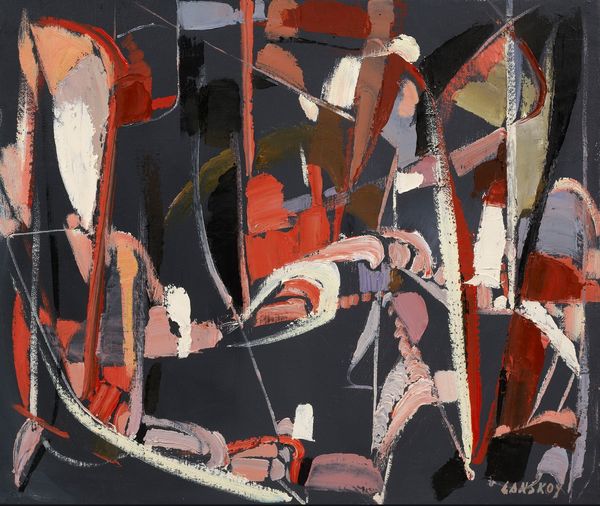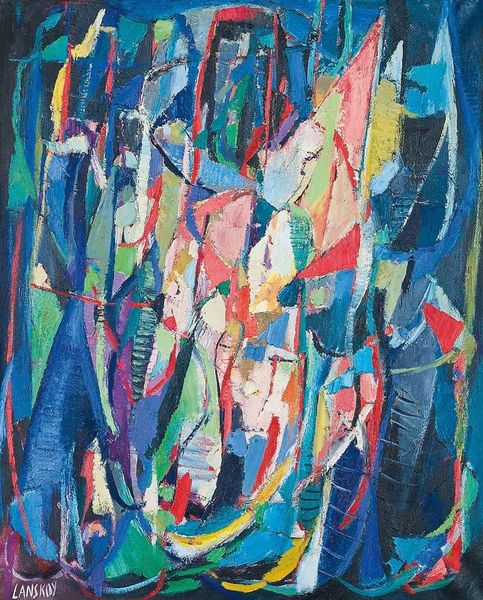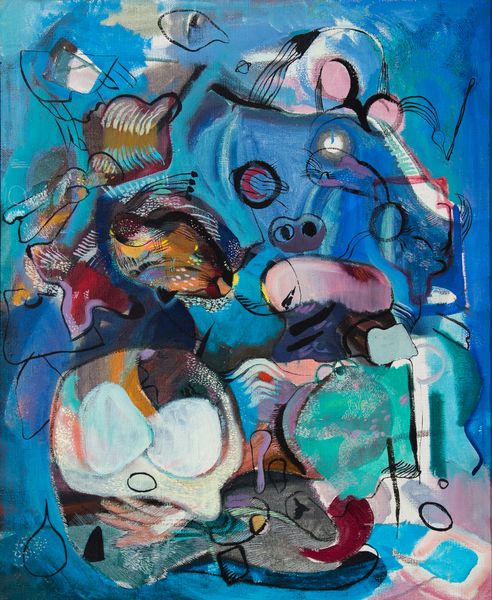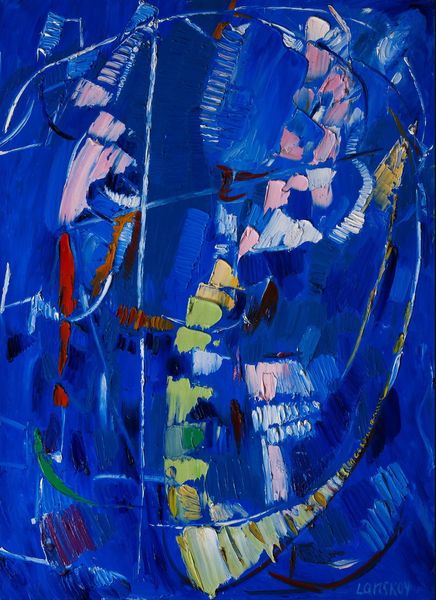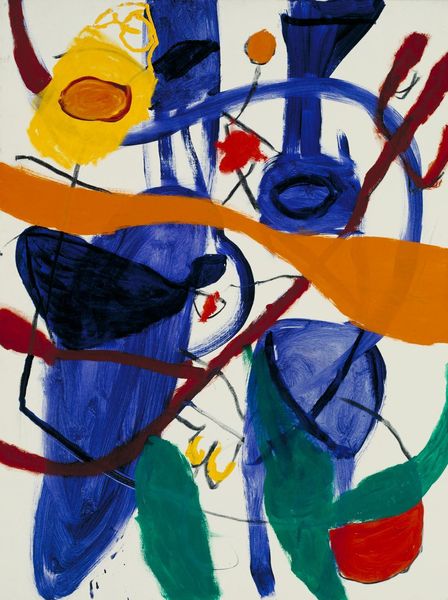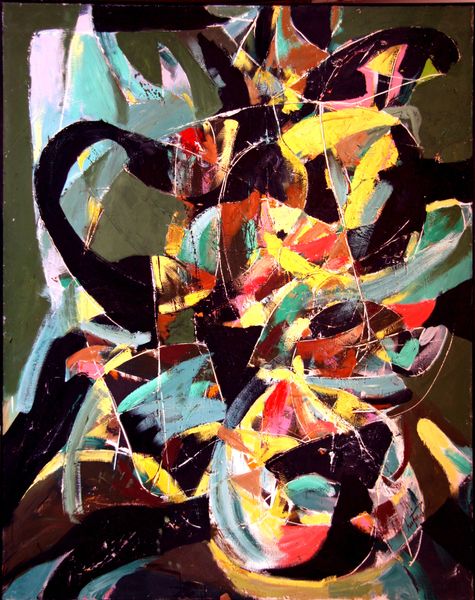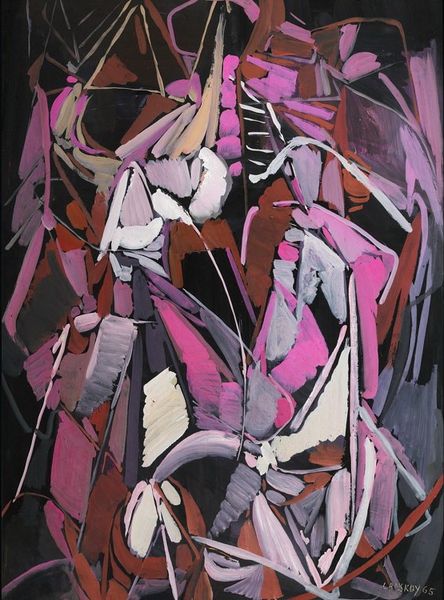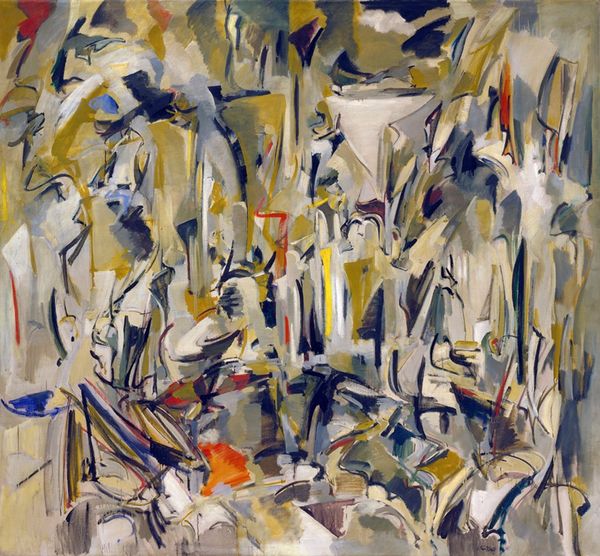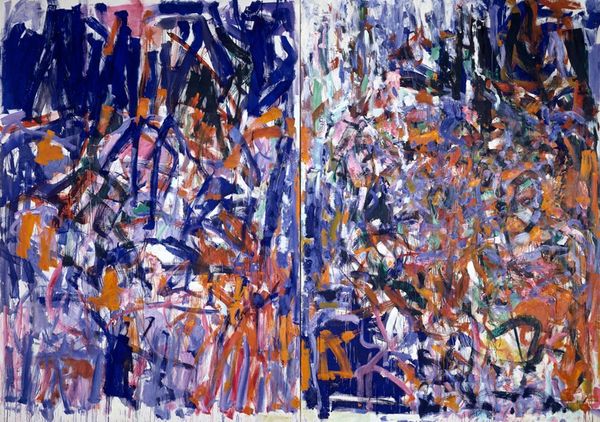
acrylic-paint
#
abstract-expressionism
#
abstract expressionism
#
abstract painting
#
graffiti art
#
acrylic-paint
#
neo expressionist
#
acrylic on canvas
#
expressionism
#
paint stroke
#
abstraction
#
expressionist
Copyright: Andre Lanskoy,Fair Use
Curator: Andre Lanskoy's "L'eclair magique," an acrylic painting, confronts us with a dazzling array of forms. It's quite a dynamic piece. Editor: Yes, the energy jumps right off the canvas. It almost feels volatile. All these fractured shapes seem to be pushing and pulling against each other, like different perspectives fighting for dominance. Curator: The interesting thing about Lanskoy's process is that he developed a style that valued spontaneity. He emphasized the texture of the acrylic paint, laying down layer upon layer to build these rather compelling abstract forms. Editor: And what emerges is something chaotic but ultimately resolved. Looking at it through the lens of history, particularly post-war Europe, I can't help but read in the tension and the desire to create anew after immense destruction. It speaks of both rupture and repair. Curator: Indeed. The heavy impasto and layering of pigment add weight, building up not just an image, but also an object with considerable presence. You feel the artist's hand—the labor of creation. There’s nothing facile about it. Editor: Right. We see these jarring juxtapositions in the shades: vivid blues against darker greens. Given that the title translates to “The Magic Lightning,” I see those electrifying moments of sudden realization or shifts in understanding—or even societal upheaval. Curator: It makes me think of the alchemy of color and material here, too. Acrylic lends itself to layering and quick drying. It was essential to this abstract expressionistic style, affording artists new levels of physical manipulation. Editor: But is it "magic?" It strikes me how, as viewers, we also are implicated in the image's meaning. Are we meant to decipher the internal logic here, or just be immersed? I think Lanskoy implies the importance of that relationship between painting and spectator. Curator: An important point. Examining the tools and method offers understanding to that interaction and reminds us of how vital material considerations are to appreciating works of art such as this. Editor: Agreed, by interpreting not only what’s there but also why, how, and when, we find its full, impactful, purpose in a shared history.
Comments
No comments
Be the first to comment and join the conversation on the ultimate creative platform.


